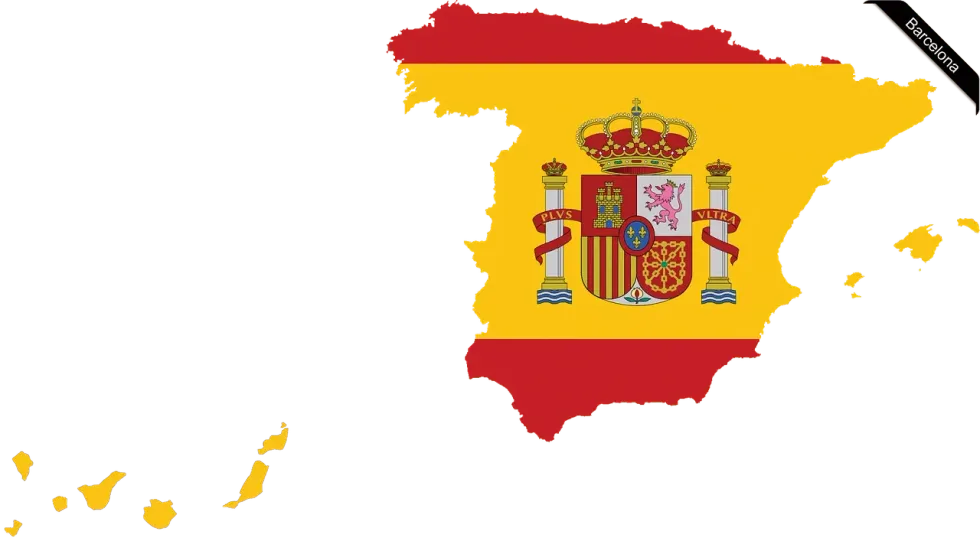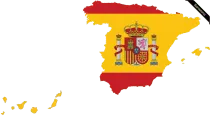Born at Madrigal de las Altas Torres, Isabella I of Castile had a pretty eventful life.
She was the daughter of John II of Castile and Isabella of Portugal and was born on April 22, 1451. Before her death on November 26, 1504, she concluded the Reconquista and started the Spanish Inquisition.
Isabella and her husband, Ferdinand II of Aragon, are still remembered for their contributions and the great team that they made when it came to governance. They brought Spain together. She also funded Christopher Columbus, while also concerned about his intentions and the nature of the lands he would find.
She died of grief after the passing away of two of her five children. Keep reading for more facts.
Initial Years: Queen Isabella Of Spain
Queen Isabella I of Castile was undeniably one of the most notable figures in the history of Spain. She and her husband Ferdinand II of Aragon brought many reforms to the land and are regarded most commonly as the Catholic monarchs that brought the Reconquista to an end.
Isabella's reign sure was great and in a way made Spain one of the power centers of Europe but her rise to power did not follow a simple route. She was the daughter of John II of Castile, who was the king of Castile.
She was the firstborn of King John II and his second wife Isabella of Portugal. Before having his daughter Isabella, John II had a son named Henry IV.
He was thus Isabella's half-brother and was to have a huge impact on the trajectory that her life followed.
Since Henry IV was born before Isabella, she was to be second in line to sit on the throne, however, with the birth of her brother Alfonso, she was pushed to the third spot. When King John II died, Isabella's half-brother sat on the throne and was to be called King Henry IV.
After his coronation to the throne, King Henry decided to go against the will of his father. His father had mentioned in his will that Isabella of Castile and her brother Alfonso were to get all the comforts of life in the palace, as well as formal education.
However, worried about retaining his throne, King Henry decided to deny Isabella, her mother, and brother of all their royal rights. This led to one of the rough patches of Isabella's life.
Isabella of Portugal and her two children were forced to move to the castle of Arevalo. There the trio hardly ever had money and had to spend their days hungry and short of basic needs such as clothes.
Isabella I of Castile and her brother were later summoned to the castle at Segovia. There, Alfonso was to receive formal education and Isabella became a part of the queen's household.
At that point in time, King Henry's wife was about to give birth to their daughter Joanna. While at Segovia, Isabella led her days in happiness.
She engaged in art and played games with the women who served the queen. This was not to King Henry's liking. However, the real ordeal towards Isabella's getting a place on the throne started after the death of her younger brother.
King Henry was quickly losing his powers at the time and desperately needed allies for maintaining his court. Isabella and her half-brother then entered an agreement through which he named Isabella his successor and she agreed to marry anyone that her brother wished.
Marriage: Queen Isabella Of Spain
King Henry IV of Castile wanted to marry Isabella off to the king of a land which would prove to be a great ally for himself. However, the missing part of the puzzle was that Isabella I of Castile was engaged to Ferdinand II of Aragon at the age of six.
Since they were second cousins, they needed a permit from the Pope to get married. Hence, Isabella and Ferdinand got married in secrecy.
When the time came for Isabella I of Castile to sit on the throne after King Henry's death, the supporters of Joanna, King Henry's daughter, started a revolt stating that she was the rightful heir to the throne. This led to the Battle of Toro.
At the end of a very bloody battle, Isabella of Castile became the queen. By then, King Ferdinand II was already on the throne of Aragon.
War With Portugal: Queen Isabella Of Spain
The War of Portugal consisted of three battles, namely the Battle of Toro, Battle of Guinea, and War of the Castilian Succession.
After King Henry's death, Isabella was the rightful heir to the throne of Castile since her own half-brother, the king, had said so. Although, with the conspiracies of the Archbishop as well as the other supporters of the king's daughter that wanted her to be on the throne instead of Isabella, a revolt was organized.
The scope of the revolt was such that the rightful queen of Castile had to fight for her place. At the end of many conspiracies and bloody battles, Isabella remained the Queen of Castile.
Her succession to the throne may not have been smooth, but it made the central and north-eastern parts of Spain united kingdoms that would later demolish the Muslim kingdom, unifying Spain and paving the way for the finding of the New World.
Reformation: Queen Isabella Of Spain
Isabella was named the Catholic Monarch by Pope Alexander VI mainly because she and her husband were the faces of the Spanish Inquisition.
When Muhammad XII who had seized Granada fell at the hands of Isabella I of Castile, the Reconquista was ended and the Catholic Inquisition was introduced, which would lead to large-scale conversions and banishments of many Jews and Muslims.
The Spanish Inquisition laid forth a very simple condition that the Jews and Muslims were to either convert to Catholicism or they would be banished from Spain. Isabella I of Castile received her education regarding religion from her mother and ended up being devout in her own rigid ways.
She and Ferdinand were bestowed the title of Catholic King and Queen, which was a great feat to achieve. She, in particular, was named Isabel la Católica, which means Isabella the Catholic.
Isabella is also known for the fact that she was one who emphasized formal education for all her children in spite of being largely uneducated herself. She was a devout Catholic and made sure that the same knowledge that she received from her mother, Isabella of Portugal, was passed on to her children as well.
Her youngest daughter, Catherine of Aragon, married Henry VIII of England. In this way was Isabella I of Castile was the grandmother of the Holy Roman Emperor, Charles V.
Control On Crime: Queen Isabella Of Spain
Even though Isabella made questionable decisions such as being secretly married, there are certain factors such as in connection with her governance that were undeniably firm and effective.
It was known to her at the time of coronation that Castile had suffered greatly under King Henry's care.
Much like her half-brother had been negligent towards Isabella and Alfonso, he was also an incompetent leader, which gave rise to several issues. When Isabella came to the throne, Castile was struggling with high crime rates.
There were events of robbery and other heinous crimes and all of them went unpunished simply because the governance system before her was utter chaos.
In order to re-establish the order that perished after her father died, Isabella I of Castile had to be more firm with her decisions. She appointed police in the city with the help of her husband Ferdinand and made sure that no offenders were unpunished.
This was a reform that wasn't heard of in such intensity and even though she came off as the rigid and severe one, it was the need of the hour.
King Henry IV had also left the economy of Castile in ruins, which became one of the reasons why Isabella also had to spend time making sure that the royal reserves were not running out. She succeeded to some degree in doing so.
In addition to this, she performed her duties as the king's wife and they served unified Spain as equals. She and her husband also funded Christopher Columbus on his voyages and thus became a medium for the discovery of the New World. In return, all the lands that Christopher Columbus discovered would belong to King Ferdinand and Queen Isabella.
Did You Know...
Isabella I of Castile was the first woman featured on a United States coin.
The Iberian peninsula conquest was concluded with the fall of Granada.
She was the first woman to feature on a U.S. postage stamp. Her picture was featured alongside that of Christopher Columbus.
King Ferdinand was born on March 10, 1452.









